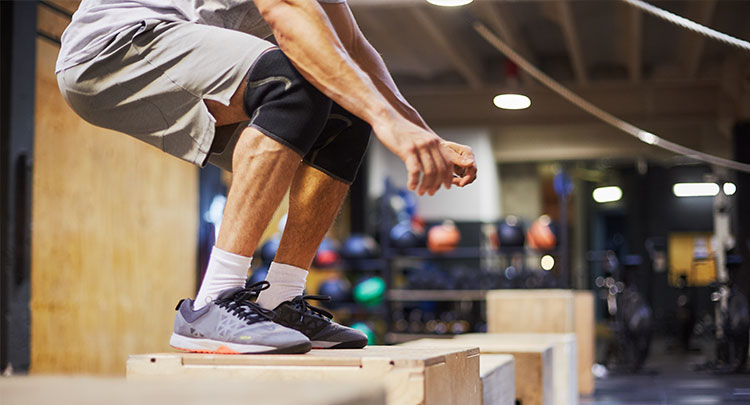
Patellar tendonitis, also commonly referred to as jumper’s knee, is a condition that can cause severe knee pain. The patellar tendon connects your knee cap to the front of the tibia, or shin bone. This tendon is forced to undergo a lot of stress in daily life, even more so if you participate in activities that involve a lot of jumping, like basketball, volleyball, long or triple jumping, and others.
Jumper’s knee can cause high levels of pain with specific movements and can make it difficult to participate in the activities you love. However, there are many treatment options available for patellar tendonitis, and stem cell therapy provides a promising option that eliminates many of the potential problems of other treatments.
What is Patellar Tendonitis?
Patellar tendonitis occurs when the tendon below your knee cap becomes inflamed and damaged. When the knee bends and extends, this tendon is forced to stretch and contract. It undergoes a lot of stress with explosive motions, such as jumping and landing, especially off hard surfaces.
When it is forced to do too much, this tendon can become painful or tender to the touch. In addition, the area below the knee cap can become swollen, causing pain with running, jumping, bending the knee, and more. Initially, the pain may be primarily noticed directly after exercise. However, if left untreated, this condition can worsen and become more chronic in nature.
While this condition occurs from overuse, it is more common if you have tight leg muscles or strength imbalances in the inside, outside, front, and back of the thighs. In addition, individuals who have higher body weight or who have bow-legged or pigeon-toed knee alignment are also at an increased risk for its development.
Treatment Options
There are a variety of different treatment options available for jumper’s knee, some of which are more effective than others.
Physical Therapy
Physical therapy is one of the most commonly prescribed treatments for patellar tendonitis. This form of therapy focuses on treating the surrounding muscles to reduce any muscle compensations, relieve tightness in the muscles, correct improper form with specific motions, strengthen all muscles of the legs, and promote correct joint alignment throughout the body.
While physical therapy can be effective, it can take months for your body to heal itself and return to normal form. Even if symptoms are alleviated, the chance of reoccurrence is quite common, especially if you return to the sport in which the initial injury occurred. This can lead to further physical therapy or the need for other treatment options.
Arthroscopic Debridement Surgery
Debridement surgery is generally only prescribed when other more conservative treatment methods have failed. This surgery is performed arthroscopically, meaning that only small punctures are made in the skin as opposed to cutting the joint open completely. A small camera is inserted into one of the punctures to allow the surgeon to perform the procedure accurately.
This procedure involves cutting away or shaving down damaged pieces of cartilage in the knee joint and cleaning up any fraying or damage on the patellar tendon itself. These surgeries may also work to shave down any bone spurs that may be causing discomfort.
While these procedures may be able to help clean up any existing damage in the joint, there is always the chance that an infection or blood clot could occur. In addition, these surgeries do not always address the root of the issue, and the existing muscle, joint, or bone problems can continue to damage the remaining cartilage in the joint, leading to further health issues.
Arthroscopic surgeries also can cause the knee joint to become stiffer, and physical therapy is often required following the procedure. Debridement surgery can be quite costly on its own, and having the additional costs of physical therapy can make the process even more taxing on your wallet.
Opioid Pain Management
Another method of pain management is through the use of prescription medications. While these can effectively block pain and reduce levels of discomfort, there are also many issues with this type of treatment. Taking medication may lessen pain, but it does nothing to address the true cause of the pain.
Because of this, it will be necessary to continue taking prescription medications on a long-term basis. This can result in many other health complications, including dependence or addiction, an increase in pain sensitivity, and symptoms of withdrawal after you stop taking them.
Regenerative Medicine Therapy
Regenerative medicine therapy provides a great treatment option that can naturally enhance the healing process using the body’s own cells. There are many options for regenerative medicine therapy from PRP, Amniofix or Stem Cells. Depending on the severity of the condition, one technique may be recommended over another.
Regenerative medicine treatments can stimulate healing of both cartilage and connective tissues, which are beneficial to both the knee joint and the patellar tendon. By injecting these treatments directly into the damaged area, they can help to regrow and repair damaged tissue while recruiting additional cells to the area to speed up the healing process.
Regenerative medicine therapies are a great alternative to other treatments for jumper’s knee as they are associated with no side effects and are not costly like many of the other options. These therapies utilize the body’s own healing processes, are minimally invasive, and address the problem and can provide long term results effectively and efficiently.
https://www.webmd.com/fitness-exercise/jumpers_knee#1
https://www.healthline.com/health/patellar-tendonitis#symptoms
https://www.ncbi.nlm.nih.gov/pmc/articles/PMC5263865/
https://www.verywellhealth.com/risks-of-knee-arthroscopy-4177344






